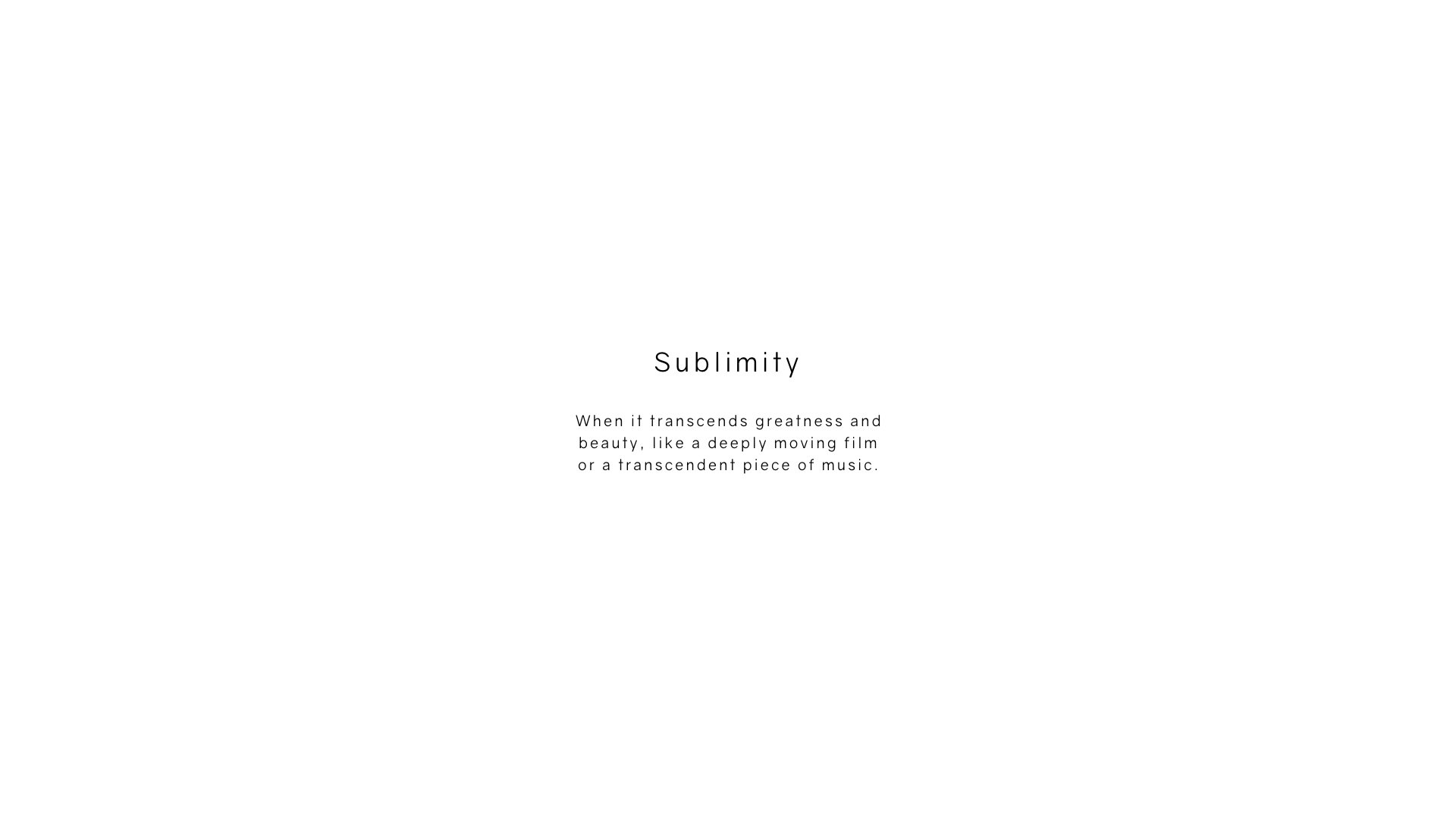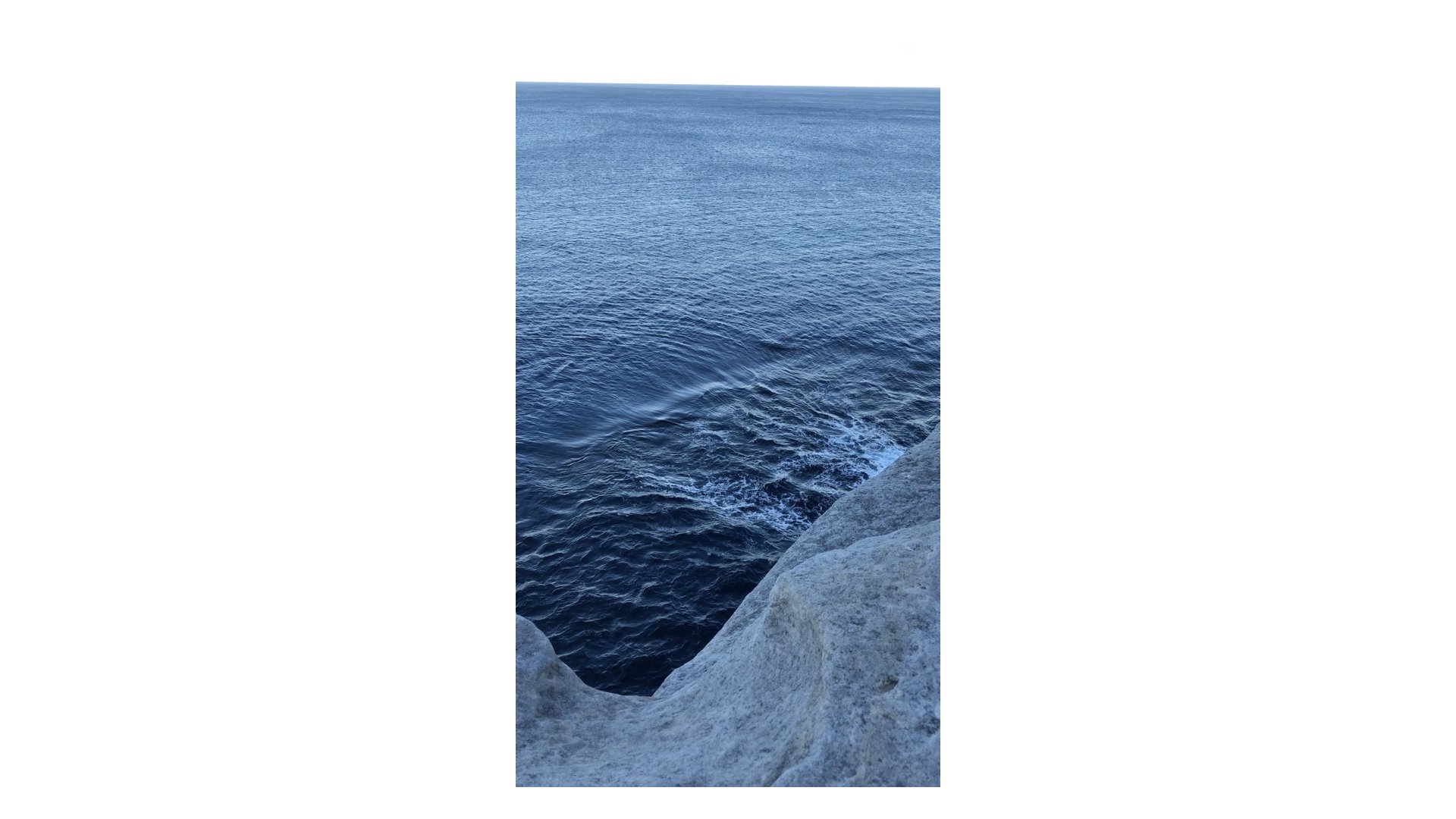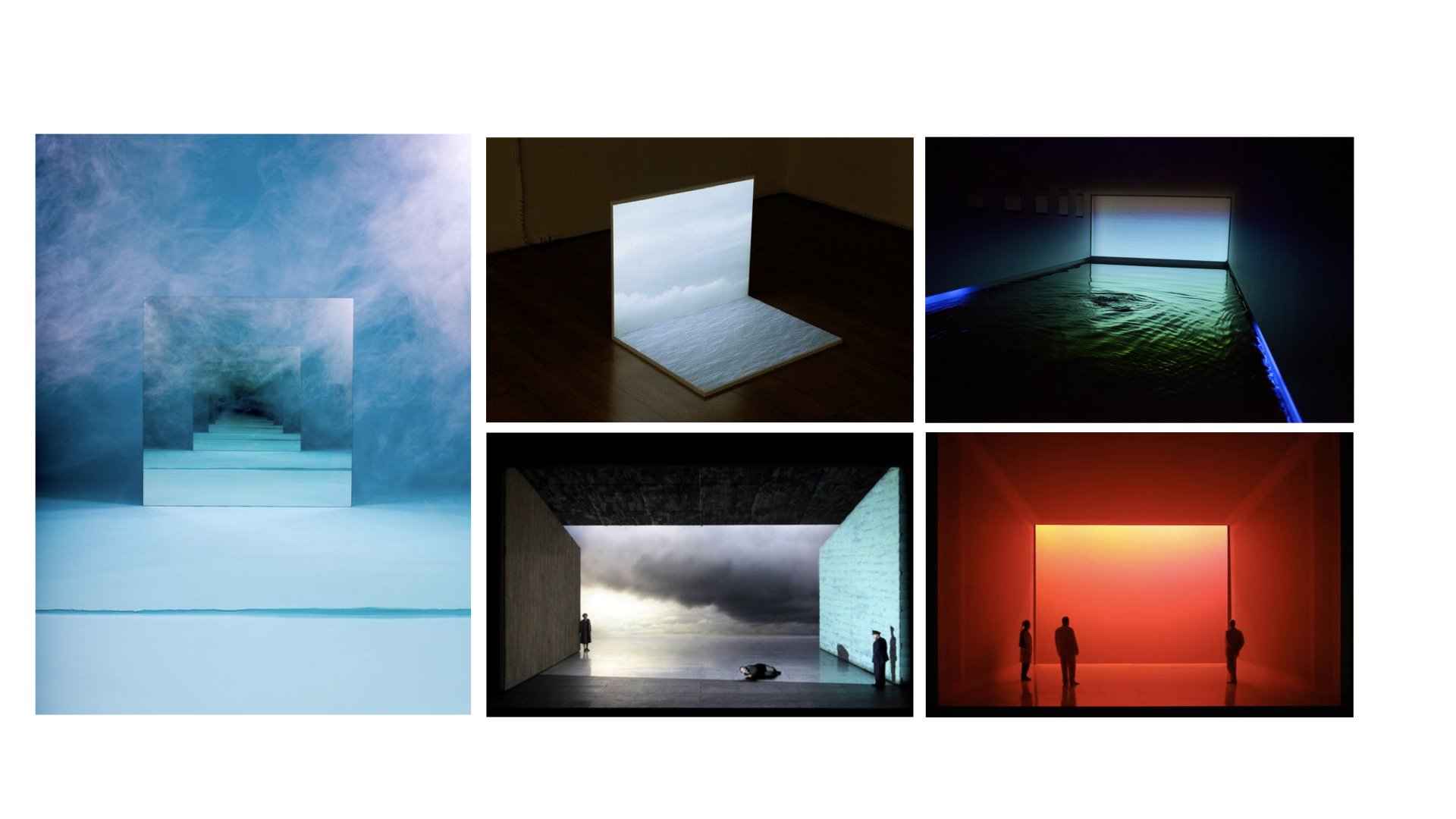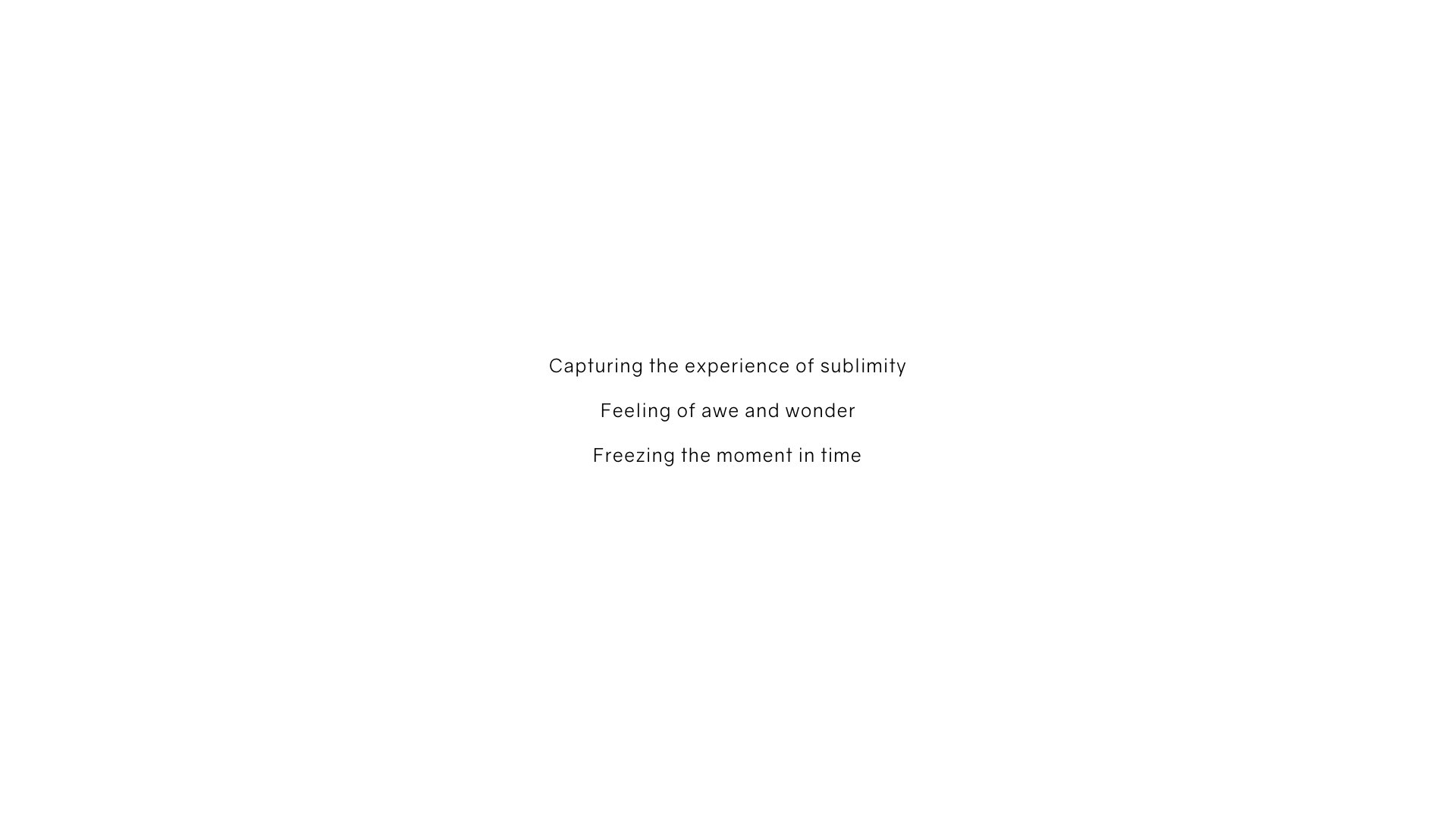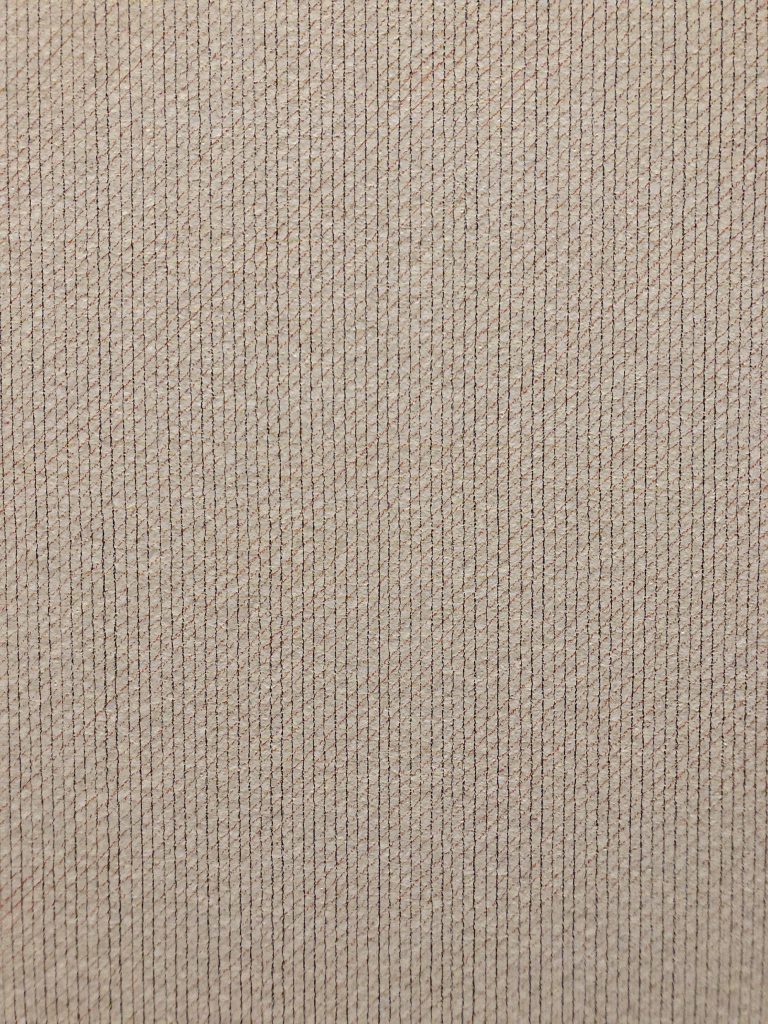
Category: Process
Lueur (100 words)
Lueur
Lueur is an immersive installation that uses the phenomena of the sublime to place life in a new perspective, enabling the viewer to see a different perception of themselves and their lives. The awestruck moment when one sees a glorious sunset, an indescribable feeling that brings a certain peace yet highlighting one’s weakness, smallness and mortality in comparison with the universe. The sudden realisation of the vastness of the world for that moment, could be a little overwhelming. But at the same time, we become acutely aware that we are only a small part of a much bigger universe. This installation hopes to be a source of light for those who are in darkness. Reminding them that there’s so much more to life than we know.
The First FYP Pitch
Sol LeWitt: Drawing #338

Sol LeWitt earned a place in the history of art for his leading role in the Conceptual movement. His belief in the artist as a generator of ideas was instrumental in the transition from the modern to the postmodern era.
So LeWitt believed the idea itself could be the work of art, and maintained that, like an architect who creates a blueprint for a building and then turns the project over to a construction crew, an artist should be able to conceive of a work and then either delegate its actual production to others or perhaps even never make it at all. LeWitt’s work ranged from sculpture, painting, and drawing to almost exclusively conceptual pieces that existed only as ideas or elements of the artistic process itself.
I D E A S I N T R A N S M I S S I O N
Early in his career, LeWitt began to have others help execute his wall drawings. Wall Drawing 16 was first drawn by a draftsman, which helped LeWitt to realize his work according to his instructions and diagrams, addressing practical concerns such as the time-consuming nature of the drawings.
More significantly, this choice articulated LeWitt’s belief that the conception of the idea, rather than its execution, constitutes the artwork. He was also rejecting the traditional importance assigned to the artist’s own hand.
Now, Sol LeWitt’s wall drawings are executed by professional draughts people from sets of instructions generated by the artist. LeWitt emphasised the idea or concept of an artwork over its visual realisation, hence his assertion that his instructions are themselves the work of art. The artist’s methodology has been likened to that of a composer: the works are manifested by others, and no single drawing is ever the definitive version.
Throughout the late 1960s and early 1970s, LeWitt, turned to site-specific, drawing-based installations in order to disengage aesthetic experience from the autonomous object, foregrounding the institution as its constitutive framework. Drawing’s unostentatious physical presence made it attractive to artists seeking to emphasise conceptual content over material form, while its affordability and provisionality made it well suited to temporary installations.
“I try to make the plan specific enough so that it comes out more or less how I want it, but general enough that [the draughts people] have the freedom to interpret. It’s as though I am writing of piece of music and somebody else is going to play it on the piano.”
– Lewitt, 1971

Drawing #338
So LeWitt, 1971, colour pencils
The wall is divided vertically into two parts. Each part is divided horizontally and vertically into four equal parts. 1st part: Lines in four directions, one direction in each quarter. 2nd part: Lines in four directions, superimposed progressively.
From a distance, an evanescent mist of colour appears to hover in front of the wall. I thought it was simply a beautiful sea of pastel paint, but once I took a closer look, boy was I dumbfounded. It was not paint at all. They were endless lines drawn in various directions by colour pencils. Colour pencils!! Are you guys hearing this? It’s a HUGE wall, adorned by colours, made up of little lines of a colour pencil! A pencil thickness is the most 0.5-0.7 on it’s lead, imagine how much time it took. Besides the crazy scale of this, not only was it lines drawn on the wall, they were precise, calculated lines that were drawn in an angle. Math + precision + repetition, that is crazy. Respect is what the professional draught people should get.

LeWitt’s works and drawings are heavily emphasised on the use of traditional medium. Besides colour pencils, he frequently uses graphite pencils to create delicately wavy lines and geometric forms in his art. This reminded me of how we are so used to our Adobe Illustrator/Photoshop that we gradually l forget how it feels to hold a pencil, rather than our Wacom pen. Think about it, when was the last time you truly held a colour pencil or a graphite pencil to create mindlessly?
If you guys could tell from my tone of voice here, I am still incredibly stumped by his work. So here are a loooot of insane close up of his work, and y’ll could see the details there. It’s crazy my friends, i n s a n e .

The technicality behind the drawing is so fascinating. It resembles a perfectly drawn grid paper or a blueprint that was actually printed from a machine. How can it be so perfect? There are zero mistakes at all. No shaky lines whatsoever. Also, the colours, the colours! The colour pencils that are used are simply primary colours and the combination of them created such beautiful hues of blue, pink, green and yellows. Besides making use of geometric shapes, colour theory is involved too! LeWitt basically went back to basics with his drawings and it’s mind-blowing because it’s such a simple yet complex idea.
Till now, I couldn’t believe that I thought it was just a simple wall paint.


And here are some of his other works that share similar execution and the same amount of amazing-ness.
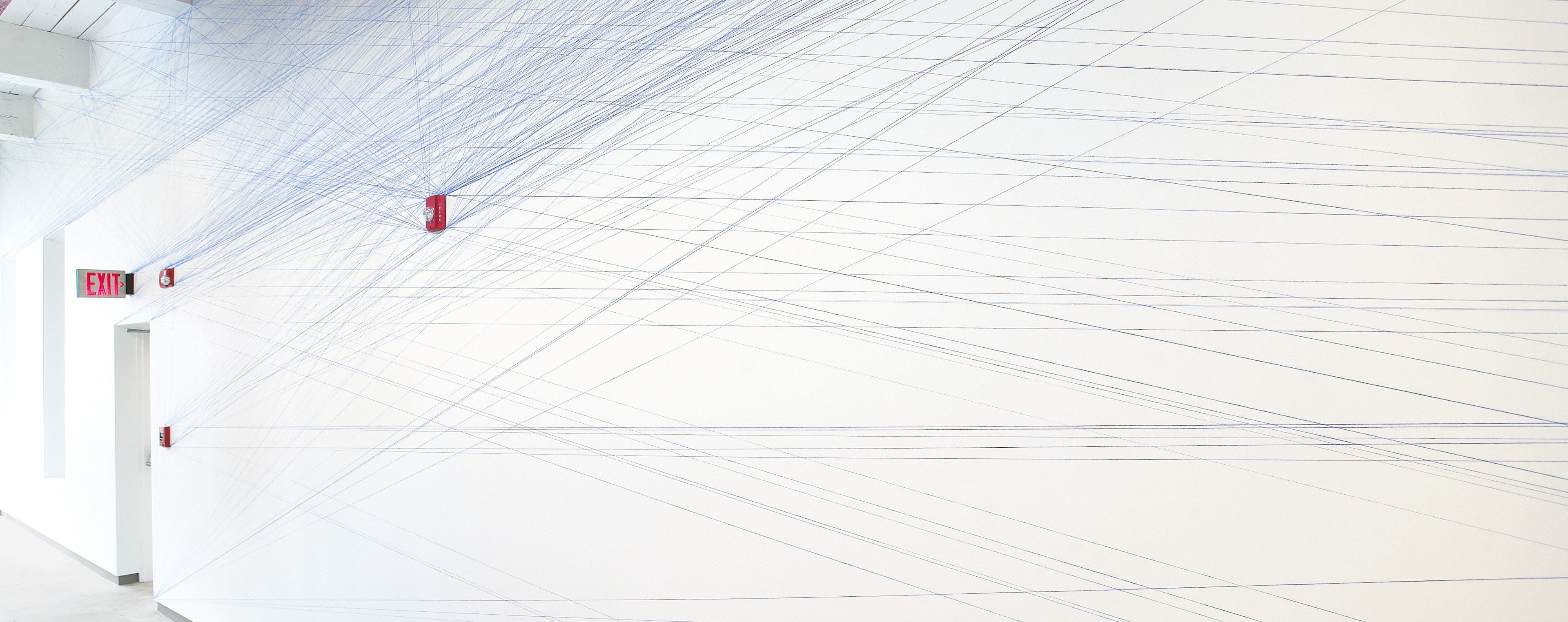
Wall Drawing #51
So LeWitt, 1970, Blue snap lines
Architectural points connected by straight lines


Wall Drawing #1180
So LeWitt, 1961, Black marker on wall

Wall Drawing #138
So LeWitt, 1972, Black pencil
Circle and arcs on both sides


Wall Drawing #797
So LeWitt, 1995, Blue, Red, Yellow markers
Thoughtful Interaction Design
Thoughtful Interaction Design | Reflection
By Jonas Löwgren and Erik Stolterman
We now live in an artificial world created by humans. Technology has become a vital and fundamental part of our everyday lives, used to better our living and the environment. Digital artefacts can be found everywhere, in our homes, workplaces and even public spaces. They influence our lives at individual and social levels, they help or hinder us in almost all our activities, and could possibly influence our individual and social developments as time passes.
By designing digital artefacts, is to design people’s lives. The creator of this artificial world, of course, is us – humans, and we have the designers who helps us along the way to find the best solution for the problems. With this much influence and impact, comes power and responsibility.
“Designer wields significant power, and with such power, comes responsibility.”
A designer has the power to change and influence the society or at a personal level. It could be something as simple as your mobile phone and everyday utensils, to architectural buildings and roadworks. The world is made up of environments, systems and things that are designed, formed and produced by humans. All things have been designed and all new things have to be designed.
Being thorough and thoughtful on the design process and thinking for every project is essential. No matter how small the project is, it becomes a big project due to its impact on the society and environment. To design is to create something new. Design is a chance, that forces you to challenge the unknown and to create something that has not exist.
As mentioned in the reading, design is very much an ethical activity. Behind every design is a combination of long, intensive research, thought processes, actions and decisions that are thoroughly analysed on its impact on the people and environment before it is carried out. Interaction design is deeply influenced by values and ideals of the society, it could be said design is with the people, not for the people.
Being thoughtful is about caring for yourself, your design project and for the people. As mentioned, we live in a world where everything is almost artificial and designed. For every new artificial addition in the world, it impacts how we experience the whole. The world will be influenced and changed by new design ideas and decisions. The designer influences the overall experience of the world that humans will spend their lives in.
It is common to say designers are built to work for their clients, to fulfil the clients needs and wants. But each designer needs to have their own set or morales and values they follow due to the power they hold. It is a responsibility that transcends the client’s contract and condition, that sets limitations on how far their work can go, so as to not disrupt and peace and flow of the society. An example would be advertising. The world of advertising is so powerful as it is broadcasted to the world. A simple message that was delivered unethically due to the client’s wishes could cause an uproar in the public. The designer needs to care about the society, and be aware of the boundaries.
We are all aware that interaction design is gradually becoming one of the most influential design fields in the world as it is what makes up people’s everyday lives. With such influence, the reading has once again highlighted the importance of being a thoughtful and responsible creator. The objects that are created are up close and personal to every individual, thus one needs to be cautious and attentive to it’s impact in hopes to make a positive change and better the lives of the people.
Design for the People
An example that I feel embodies the idea of a thoughtful design is the EnChroma Glasses which is designed for the colour blind. It is made with a colour vision technology, uniquely engineered to give those with colour blindness the ability to see the broad spectrum of bright colour that most of us take for granted.
When someone with red-green color blindness wears a pair of EnChroma glasses, they perceive a more accurate range of colors – and the experience can be life changing.
Colour blindness has been an issue for centuries and this glasses was only released in 2012. It is an old product (as of now it’s 2019), but when it was released, I was so touched and awed by the creation as this has helped many to see what most of us can see.

How the glasses work is that it utilises a light filter technique, with mathematical precision applied to address the common forms of red-green colour blindness. It simple terms, it works just like a photo filter, genius isn’t it? Such a simple idea yet is works wonders. Also, the glasses comes in different forms of designs that simply looks like you’re shopping for a pair of designer sunglasses. I feel the designer has put in a lot of thought and process to make sure the glasses does not look any different from other sunglasses so that the users can wear it at ease, without feeling they are wearing a “special” glasses.
With the application of science, optics, mathematics and more than 10 years of clinical research, EnChroma continues to advance the field of color vision research and bring new products to market that solve unique color deficiency issues. EnChroma is a company that I feel has ultimately solved the problem for many of the humans with colour deficiency. It is a product that is life-changing.


































